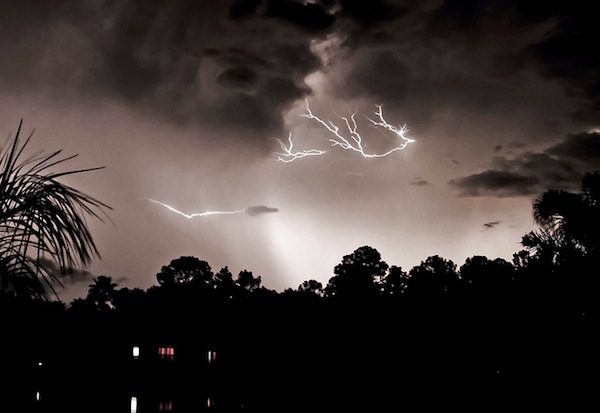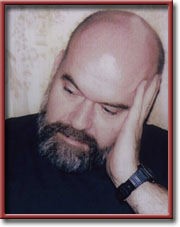Lightning Fast
“Lightning has already visited me. It messed up the guest room—and more. It promises an unannounced, unlooked-for return, trashing the rest of the house. Every day, it tiptoes up my front drive, debating whether to knock or simply “crash the party.” Sanford Rose
Dolors& Sense
By Sanford Rose

 KISSIMMEE Florida—12/31/2012—Lightning is fast driving me to distraction—to the anguish of Astraphobia, the curse of Keraunophobia.
KISSIMMEE Florida—12/31/2012—Lightning is fast driving me to distraction—to the anguish of Astraphobia, the curse of Keraunophobia.
Lightning has already visited me. It messed up the guest room—and more.
It promises an unannounced, unlooked-for return, trashing the rest of the house.
Every day, it tiptoes up my front drive, debating whether to knock or simply “crash the party.”
Every day, I rush to the door. Careful not to open it, I hold up an empty bottle and shout: “Booze’s out; no fun here.”
Not confident of my powers of persuasion, I consult lightning protection contractors.
Reasonably obtainable in other parts of the country, lightning protection in Florida, like so many other services, is problematic.
There are certainly many would-be suppliers. But what most sell is not lightning protection, but lightning attraction.
A lightning-protection system has five components: those pointy (now rounded) roof-rods, conducting cable, surge protectors, bonding wires and earthing (or grounding) electrodes.
Of the five, the last two are by far the more important.
If the current can be guided seamlessly (without risk of side flashing) to a ground in which it can be dissipated rapidly, the house will stand.
Seamless guidance depends on bonding all the roof’s metal structures to the newly installed side cable.
Good grounding is a matter of depth. In some parts of the country, the earth, rich in well-watered loam, is accepting of current. In those areas, grounding to a depth of ten feet may prove adequate.
In central Florida, however, the earth is sandy and thus resistant to current.Unless special protective steps are taken—often burying electrodes 20 instead of ten feet—the refractory soil may send the current, like a misaddressed letter, back to its sender: the exterior, and perhaps also the interior, of the structure.
Most “protection providers” scant careful bonding and grounding steps. Their half-hearted efforts increase the vulnerability of houses to punishing strikes.
Finding someone who knows his business is a time-consuming yet indispensable endeavor.
![]()
Note: Flickr image used to illustrate this column courtesy of minds-eye: http://www.flickr.com/photos/craigoneal/6189026254/.
